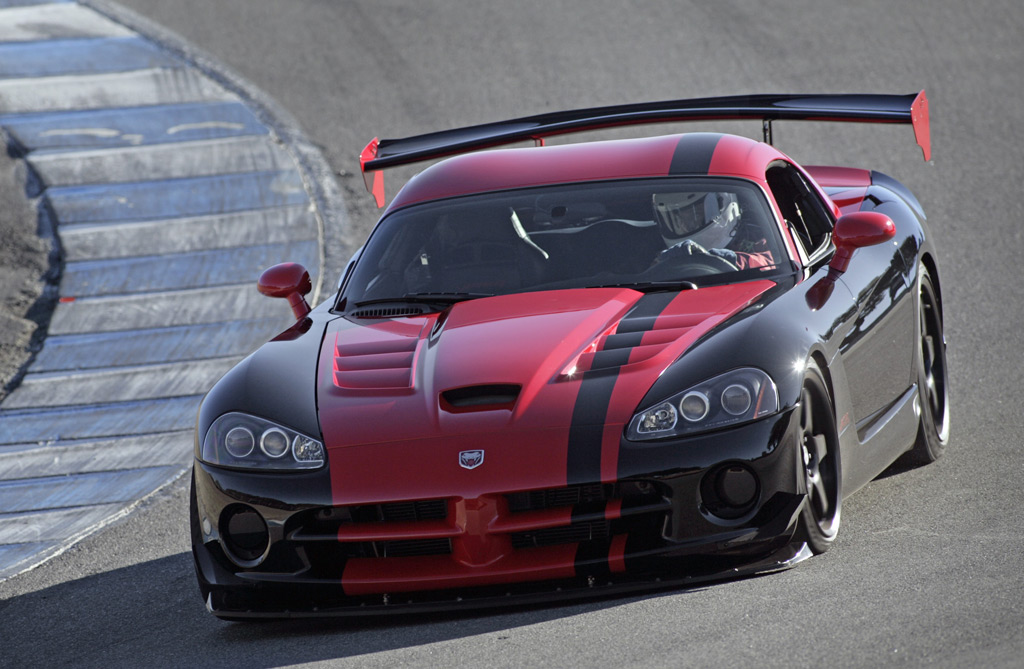Fiat Chrysler Automobiles this month built its final Dodge Viper, and despite the ramblings of CEO Sergio Marchionne about a possible successor, it looks like the 2017 model year will be the nameplate’s last.
The final car was a red GTS, which FCA plans to keep in its heritage collection. Yes, the Viper has bowed out before. You’ll recall it skipped the 2011 and ’12 model years. But back then FCA was talking up a new model even before production of the current car had ceased.
The official line is that the car won’t meet the latest round safety regulations, specifically the packaging requirements for a new ejection mitigation regulation airbag. However, you could also blame low volumes making it too expensive to justify a redesign. Just 630 were sold in all of 2016. The car’s V-10 isn’t helping FCA’s fleet-wide emissions, either.
The Viper is still one of the fastest on sale, regardless of price, but the game has changed and this time it looks like the all-American supercar’s time is finally up. Here’s a look back at some of the highs and lows over its 25-year history.

Pre-production Dodge Viper pace car at the 1991 Indianapolis 500
End of a dismal era: The Viper was born at the close of an era of disappointment among American cars, which at Chrysler was epitomized by the K-Cars. The Viper was totally different. It was a smooth, sexy supercar designed to burn fuel and rubber.
An instant success: The car began life in 1988 by Chrysler's Advanced Design Studios. Under noted product man Bob Lutz's direction, designers Tom Gale and Roy Sjoberg brought the idea of a modern-day Cobra from paper to reality. The original concept proved a major hit at the 1989 Detroit auto show and just two years later none other than Carrol Shelby was pacing the Indianapolis 500 in a pre-production example. By early 1992 the first Vipers were landing in showrooms.
Powered by a truck engine: Of course the car wasn’t without its detractors. The Viper was powered by a V-10 from Chrysler's truck lineup, albeit modified by Lamborghini, which was owned by the American automaker at the time. The engine alone weighed more than 700 pounds but it produced an impressive—for the time—400 horsepower. The car was an absolute brute in all aspects and proved to be difficult to drive at its limits.

2010 Dodge Viper SRT10 ACR
Redesigned with Daimler’s help: A second-generation Viper was introduced for 2003, this time as both a coupe and roadster. Daimler and Chrysler’s famous “merger of equals” had been completed and fresh funds were available to develop the successor. Everything was done right. The power went up, weight was reduced, and the chassis was made tauter in all the right places.
Production car Nürburgring record: The improvements made with the second-generation Viper meant the car was now one of the fastest ever produced. This was confirmed in 2011 when the track-focused ACR model lapped Germany’s Nürburgring in 7:12.13, which remained a record for rear-wheel-drive production cars up until late 2016.
A loyal following: Despite the harshness, especially compared to more refined rivals coming out of Germany and Japan, the Viper generated a loyal following. Many appreciated its prowess at the racetrack, plus the fact the Viper could demolish much more expensive competition. However, there is probably none more dedicated to the Viper than Wayne and D’Ann Rauh. Earlier this year the couple from Texas added the 80th Viper to their collection.

Wayne Rauh and wife D’Ann take delivery of their their 78th and 79th Dodge Vipers
Teetering on the edge: While the car may have a loyal following, that following is small. As previously mentioned, the Viper has bowed out of the market before. The last time, though, wasn’t entirely the car’s fault. In the preceding years, Germany’s Daimler had just split from Chrysler by selling the majority of the automaker to Cerberus. The private equity group didn’t have much luck and eventually Chrysler needed to be bailed out. In 2009, Fiat stepped in but the last thing on anyone’s mind was an expensive niche product like the Viper. It meant Viper production ended, albeit temporarily, after the 2010 model year.
Next-gen Viper appears as…a Mercedes? Although it will never be confirmed, there are claims Mercedes-Benz benefited from some of the early work done on a next-generation Viper. How so? According to some, after Daimler’s split with Chrysler, some of the early work on a new Viper was utilized by Mercedes for its SLS AMG supercar. The proportions of the car, the fact that a Viper body was used for early test mules, even the character of the car itself all seem to bear a lot of Viper influence.
No longer a Dodge: Eventually a third-generation Viper emerged. Arriving as a 2013 model, the debut took place at the 2012 New York auto show and excitement appeared to be at an all-time high. The only problem was the car was no longer referred to as a Dodge Viper. Instead, it was labeled an SRT, an acronym for Street and Racing Technology which FCA was hoping to turn into its own version of BMW M or Mercedes-AMG. The plan was to make the car seem more exclusive, but it failed and just 591 examples were sold in the first full year on the market.

2013 SRT Viper, 2012 New York Auto Show
Return to 1992 pricing: Low demand meant cars were sitting on dealer lots. As a response, FCA dropped the SRT idea and slashed prices by up to $15,000. The starting price was dropped to a reasonable $84,995, which the automaker boasted was the same price you would have paid when the original Viper was launched, when adjusted for inflation. The move gave a much-needed boost to sales, though it never came close to the 2,000-unit annual tally FCA had said was a target at launch.
FCA crushes students’ Vipers: Around this time, FCA made the bizarre decision to start crushing 93 original Viper prototypes, including the car with the VIN ending in 004, that were gifted to various schools' automotive technology programs. The reason was that two of the 93-car fleet, none of which are allowed to be driven in public since they aren't certified, were involved in accidents and since FCA officially owned the cars it apparently was stuck with large liability costs. We know of at least one of the rare cars that was saved from the crusher.
Faster than a hypercar: Some redemption came FCA’s way when the automaker in 2015 rolled out a new Viper ACR. Incredibly, it set lap records at 13 racetracks around the country, including some of the most popular such as Laguna Seca and Road Atlanta. The car even managed to beat the new crop of hypercars like the McLaren P1 and Porsche 918 Spyder at some of the tracks despite being considerably down on power and price. More recently, a crowdfunded Nürburgring attempt saw the ACR set an insane 7:03.45 lap time, the new record for rear-wheel-drive production cars.

2017 Dodge Viper ACR in preparation for Nürburgring lap record attempt - Image via ViperRingKing
The Viper has always taken a brute force approach to power and performance. Its 8.4-liter V-10 makes great power, but engines of half that size can put out comparable horsepower and torque these days, and they weigh much less. Given that formula, the Viper's day was destined to end.
That doesn't mean the Viper won't return in a different form, but there will likely never be a car like the first three generations. So, if you cherish the raw, unbridled nature of the Viper, better get one while you still can.
